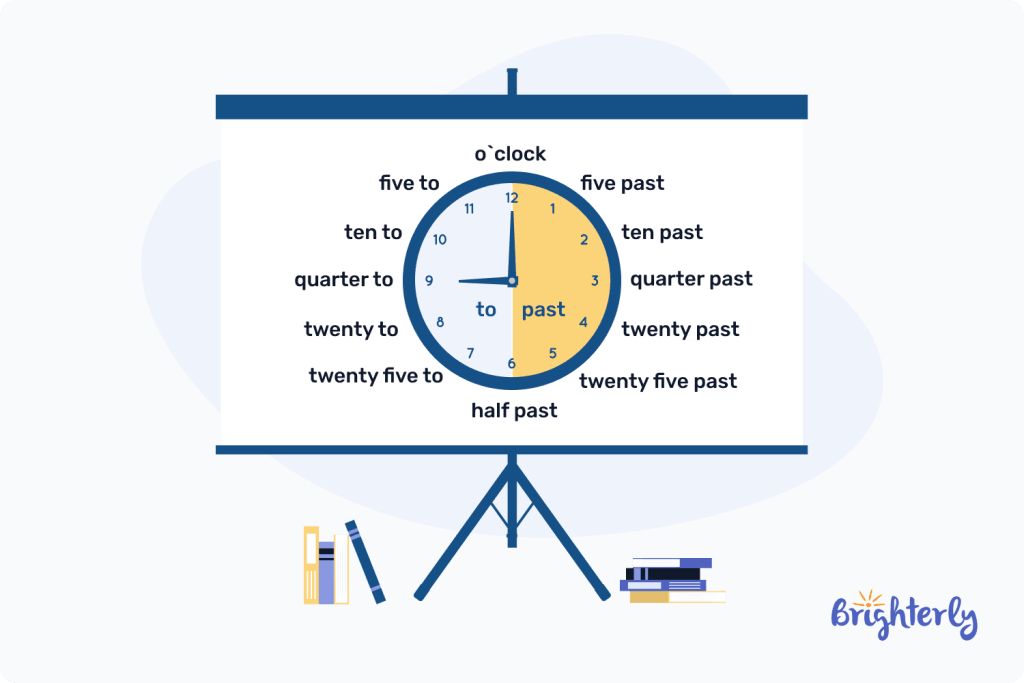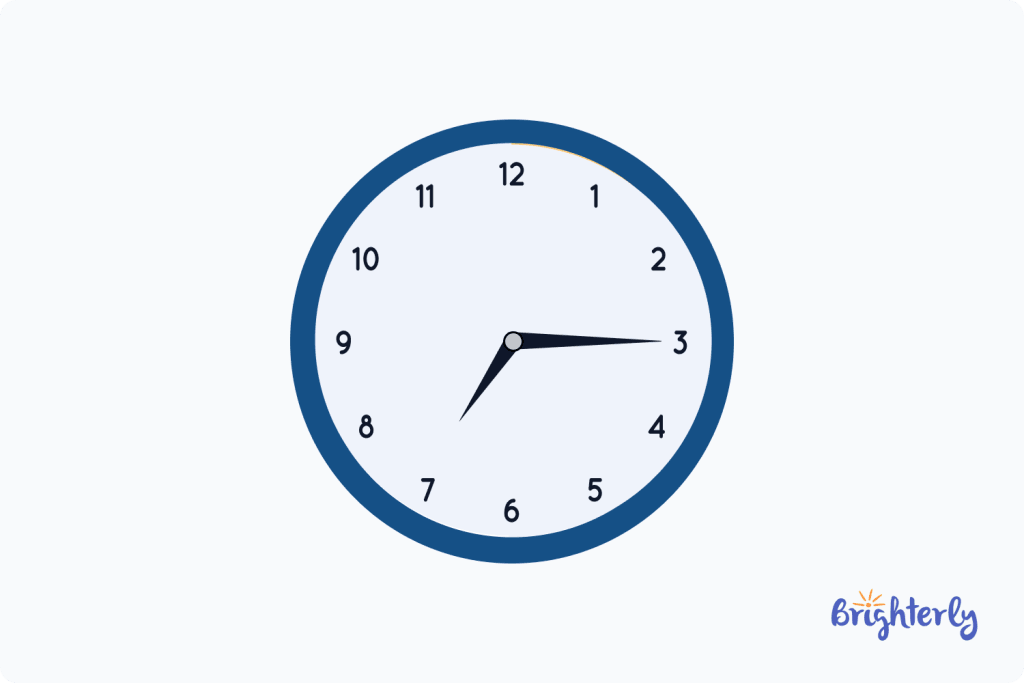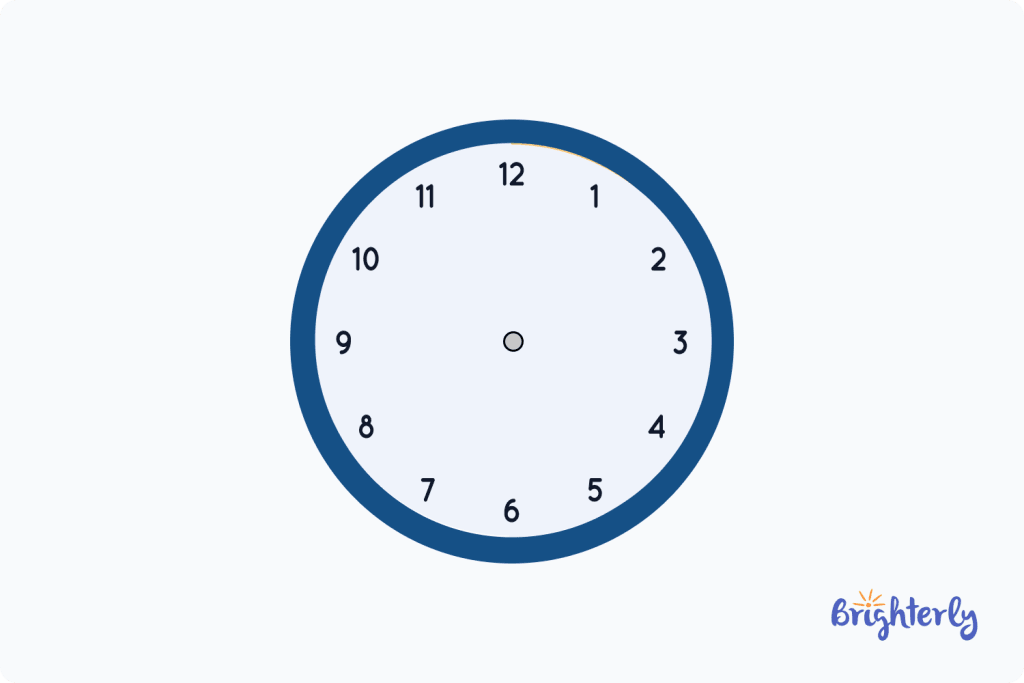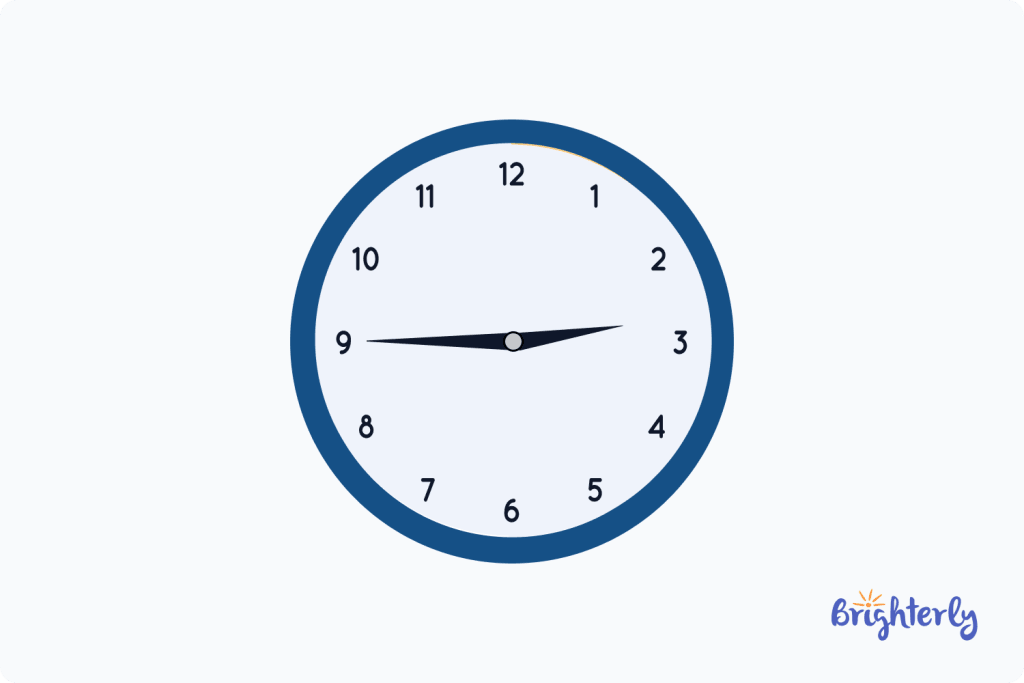Quarter Past – Definition with Examples
reviewed by Jo-ann Caballes
Updated on July 15, 2025
Welcome to Brighterly, where we make math exciting to learn and easy to understand!
Today, we’re going to be looking at time and the key concept of quarter past.
Here, we’ll study the quarter after meaning, how to read it on a clock, how long it is and the origin of the term. We’ll also share fun math worksheets and practice test questions so you can improve your learning even further!
What is quarter past?
Quarter past is a key measurement of time that we use in everyday life. It’s the term used to show that the time is a quarter past the hour – i.e. we have moved through one quarter of an hour. We cover the full definition of quarter past below.
Definition of quarter past
The definition of quarter past is a unit of time that means a quarter past the hour. Because an hour is 60 minutes, this means it is 15 minutes past the hour. It’s a common unit of time, but it may confuse children who don’t know how long a quarter of an hour is.

How long is a quarter of an hour?
A quarter of an hour is 15 minutes because 1 hour is 60 minutes. To understand how long the quarter of the hour is, we simply quarter 60 – i.e. we divide it by 4. 60 minutes ÷ 4 = 15 minutes.
How to read the quarter past on a clock?
To read quarter past on a clock, you need to understand how a quarter is represented, plus what the markers mean. There are 12 markers on a clock, each representing a time of 5 minutes. This means every time the big hand reaches a marker, 5 minutes have passed.
You can read quarter past on the clock by either counting three 5-minute segments (many clocks are marked with numbers 1-12) to get to the quarter past mark (because 5 x 3 = 15), or you can work out that it moves a quarter of the way around the whole clock.
Quarter-hour clock
There are 4 quarter hours on clocks. First, you have quarter past, which is one quarter. Then you have half past, which is two quarters (or one half). Next, you have three quarters, which we commonly refer to as “quarter to” the next hour. For example, quarter to 6 is equal to 5:45. Finally, you have the hour marking, which is another quarter hour after.
Examples of quarter past
There are lots of examples of quarter past on a clock, including:
- Quarter past 1 pm: 1:15 pm
- Quarter past 5 pm: 5:15 pm
- Quarter past 9 pm: 9:15 pm
- Quarter past 11 pm: 11:15 pm
- Quarter past 2 am: 2:15 am
- Quarter past 6 am: 6:15 am
- Quarter past 10 am: 10:15 am
- Quarter past 12 pm: 12:15 pm
Origin of the term “quarter past”
It is believed the term quarter past originated in Europe in the late Middle Ages. When mechanical clocks were invented, and replaced more rudimentary ways of telling time like sundials, it was possible to break up time into precise segments. Due to the nature of a clock, it was easy to divide an hour into quarters.
Understanding the concept of quarter past
To understand the concept of quarter past, we need to understand the concept of time and an hour. Our day is made up of 24 hours, and each hour is made up of 60 minutes. Those 60 minutes are split into 12 segments of 5 minutes on a clock. This means that the first three segments equal 15 minutes, aka a quarter of an hour. Because this also takes up a quarter of the clock’s face, it’s referred to as a quarter past.
Significance of quarter past in timekeeping
Splitting an hour into segments like quarter hours means we can manage our time more effectively. Quarter past means we can measure how much time has passed since the hour, and many things can be measured in 15-minute increments, like:
- A doctor’s appointment
- A bus, car or train journey
- How long a math puzzle takes you to solve
- How long a YouTube video is
Difference between quarter past, half past, and quarter to
Quarter past, half past and quarter to are all measurements made up of quarters, but they’re all different.
Quarter past indicates that a quarter of an hour (aka 15 minutes) has passed since the hour.
Half past indicates that half an hour (aka 30 minutes, or two quarters) has passed since the hour.
Quarter to indicates that there is a quarter of an hour (aka 15 minutes) until the next hour. Quarter to also denotes that three-quarters of an hour (aka 45 minutes) has passed since the hour. Quarter to 7, for example, is equal to 6:45.

Teaching kids the concept of quarter past
To teach kids the concept of quarter past, using a clock or an image of a clock is essential. You’d show where the big hand lands in order to show quarter past – i.e. the number 3 or the third marker. Then, you can show them how the hour correlates too. I.e. if the hour hand is on 3 and the minute hand is also on 3, it’s 3:15, or quarter past 3.
Activities to understand quarter past
There are many activities you can do to understand quarter past, including:
- Using a toy clock with moving hands to display quarter past
- Reading different clock times using worksheets
- Reading a real-life clock
How to communicate quarter past in different languages
Here are some ways you can communicate quarter past in different languages:
- Spanish: y cuatro
- French: quart passé
- Chinese: 过去一刻
- Vietnemese: 15 phút trước
- Italian: e un quarto
- Arabic: لربع الماضي
- Hebrew: רבע אחרי
Solved math tasks: examples
Put your knowledge to the test with our solved math tasks on quarter past – solve our puzzles then check your answers!
Solved math task 1
How would you write a quarter after 5 in the afternoon?
Answer:
| 5:15 pm. |
Solved math task 2
What time is this clock showing?

Answer:
| 7:15. |
Solved math task 3
Draw a quarter to 3 on a clock.

Answer:
Your clock should look like this:

Practice problems on quarter past
Quarter past: worksheets
Improve your knowledge of quarter past even further with our fun math worksheets!
- Clock worksheets
- Telling time worksheets
- Telling time worksheets grade 1 worksheets
- Telling time to the minute worksheets
Frequently asked questions on quarter past
Why is it called a quarter past?
The reason it is called quarter past is because quarter past represents a quarter of an hour, therefore a quarter of the hour has passed since the hour.
What time is it when it’s a quarter past six?
When it’s a quarter past six, this means that 15 minutes have passed since the hour of 6 am or 6 pm.
What is the difference between half past and quarter past?
The difference between half past and quarter past is in how much time has passed since the hour. Half past means that half an hour (aka 30 minutes, or two-quarter hours) has passed since the hour. Meanwhile, quarter past means that a quarter of an hour (aka 15 minutes) has passed the hour.






